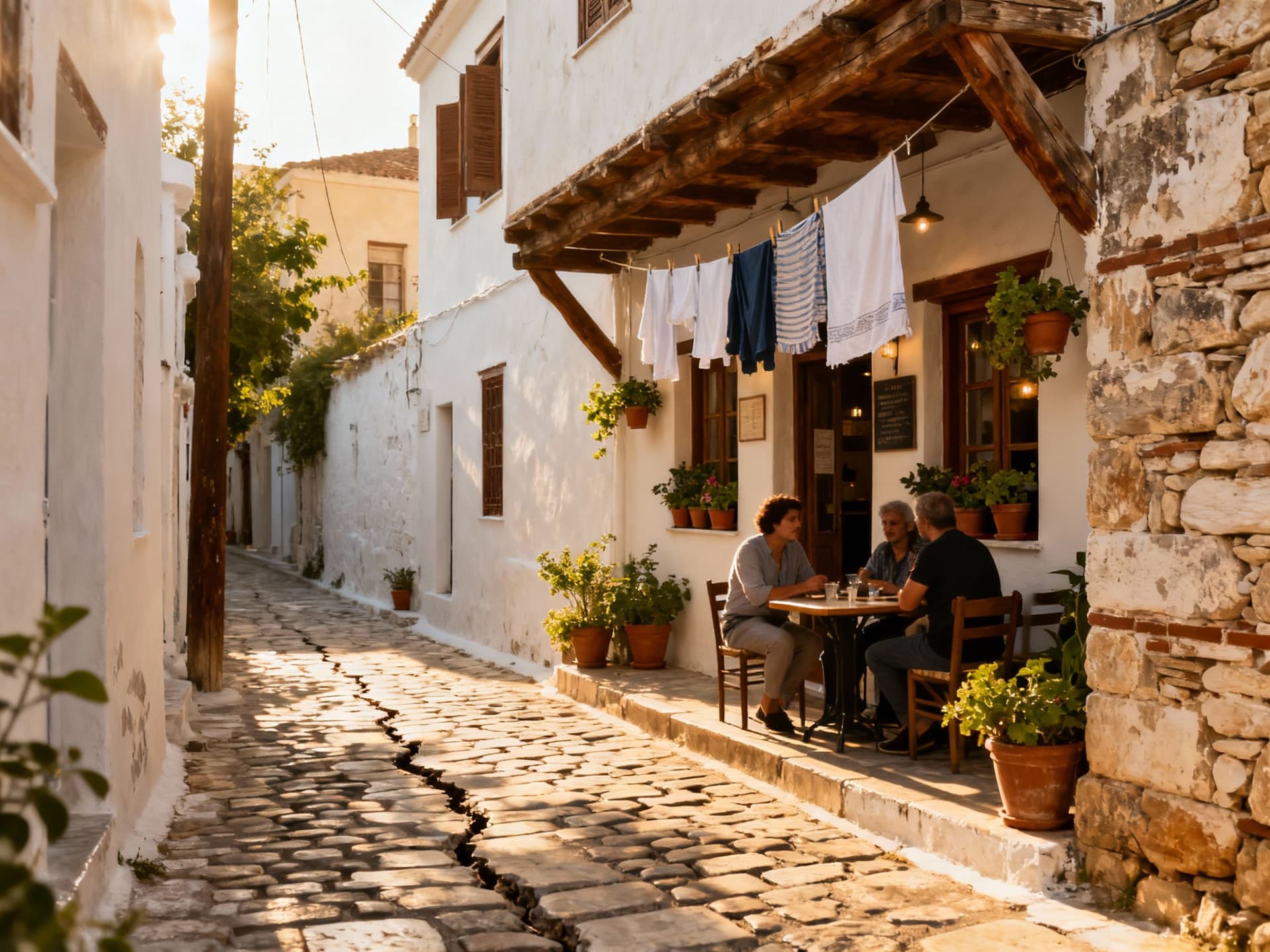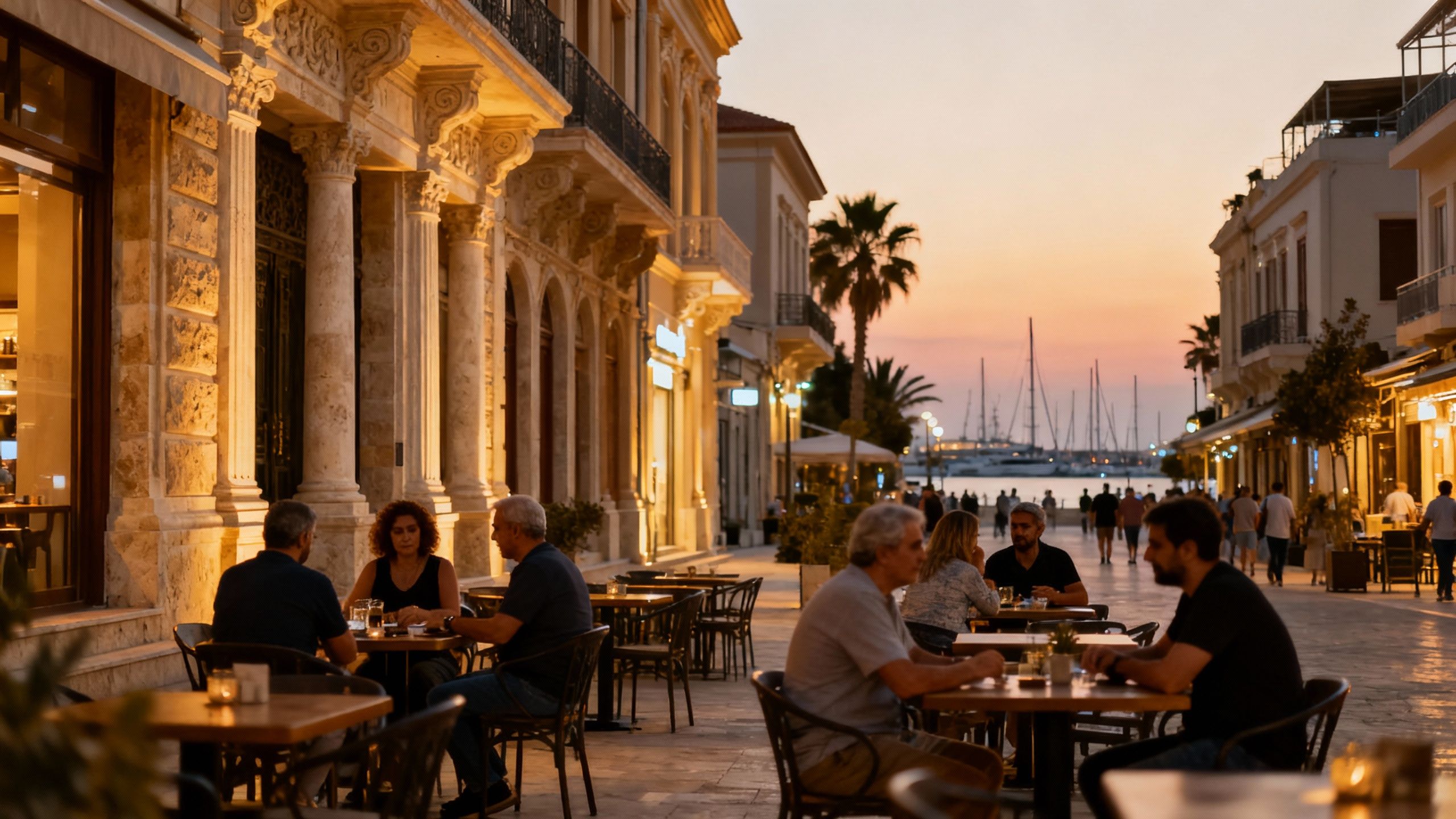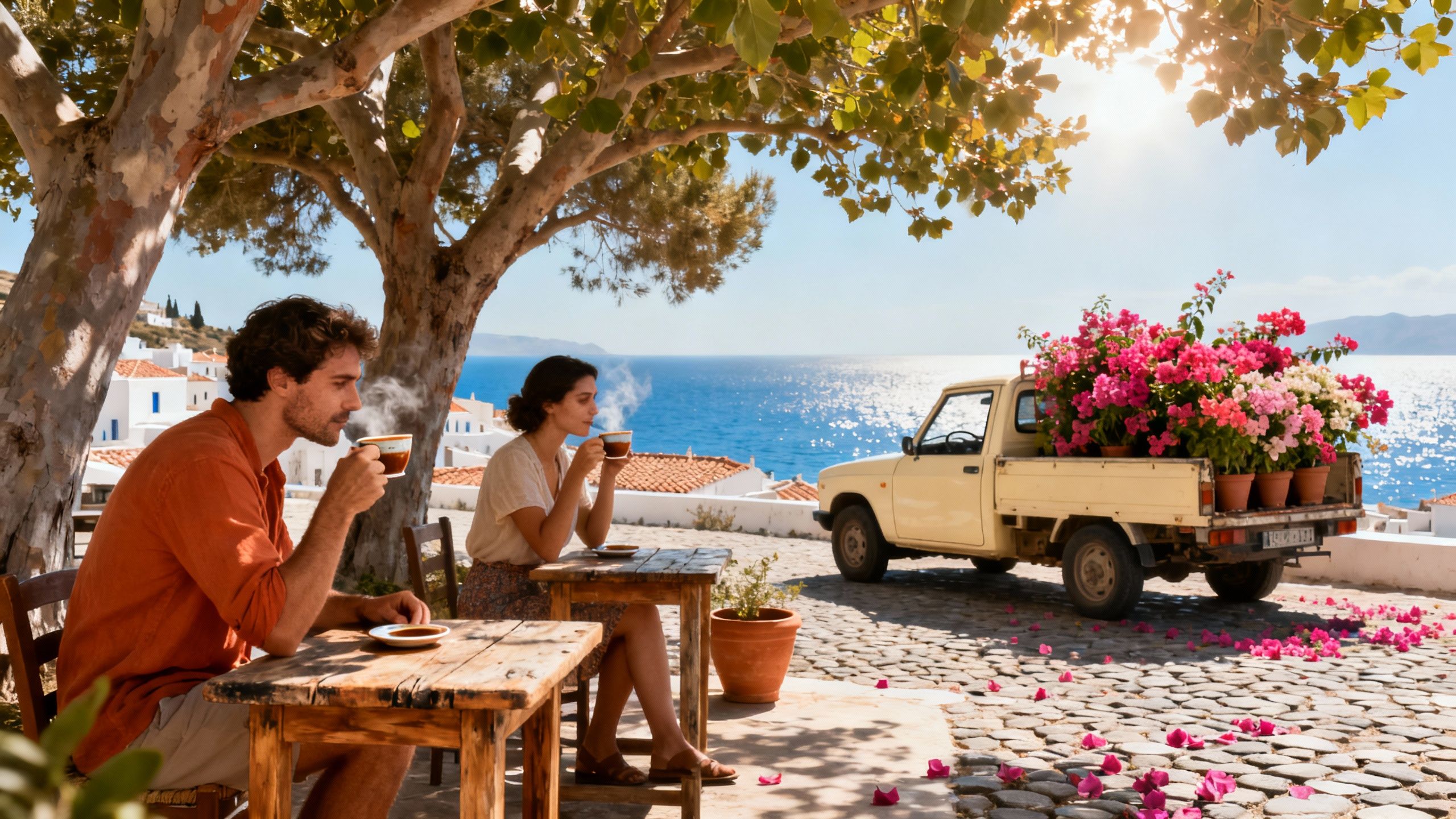Greece: Taxes That Shape Where and How You Live
Greece’s lifestyle charms are decisive — pair them with targeted tax planning (ENFIA, rental levies, non‑dom rules) to protect cash flow and stewardship.
Imagine waking each morning to the sound of church bells in Plaka, then sipping a short, bright espresso at St. Irene Square while a fishmonger arranges his catch. Greece softens the day with sea air and slow rhythms; for many of us the country’s texture — whitewashed alleys, limestone terraces, tavernas that open late — is the reason we consider buying here. Yet lifestyle is only half the picture. Recent market analysis shows that tax choices and residence rules can transform a romantic purchase into a sustainable, long‑term asset. Understanding Greece’s tax options, from ENFIA to the non‑dom regime, lets you design a life here that is as carefully composed as the houses you’ll choose.
Living the Greek life — what you actually experience

Greece is not a single tempo but a collection of local cadences: the measured civic life of central Athens around Kolonaki, the island ritual of early morning markets in Naxos, the coffee‑and‑kafenio steadiness of Chania’s old town. These textures shape where you will spend mornings, how you’ll meet neighbours and whether you will need a car or rely on a bicycle and foot. For property buyers this matters: a seafront maisonette in Hydra offers a different set of seasonal costs and maintenance realities than a restored neoclassical apartment on Athens’ Dionysiou Areopagitou.
Neighbourhood spotlight — Athens: Kolonaki and Plaka
Stroll from Kolonaki’s small galleries to Plaka’s stone steps and you feel the city’s social architecture: cafés that double as offices, municipal gardens where seniors play backgammon, and late‑night ouzeries. Properties here favour listed buildings with high ceilings and period mouldings; think refurbished lifts, historic doorways and the occasional courtyard olive tree. Expect higher maintenance and preservation obligations but also a market where provenance and craftsmanship retain value.
Island life — Mykonos edges and quieter Cycladic towns
On islands such as Mykonos or Santorini the tourist season reconfigures neighbourhood life for half the year; tavernas hum and short‑term lettings command premium yields. Government moves to raise tourist and short‑term rental levies in 2025 illustrate the trade‑off: strong seasonal income comes with policy risk and higher operating costs. If your dream is a summer terrace, build those costs — and the potential for regulation — into your financial plan.
- Lifestyle highlights worth mapping before you buy:
- Koukaki’s cafés and evening promenades — neighbourhood life within walking distance of the Acropolis
- Naxos market mornings — farmers’ stalls that define a farm‑to‑table routine
- Hydra’s car‑free lanes — a maintenance and logistics reality that feels charming until you need to move furniture
- Chania’s Venetian harbour — architecture that commands specific restoration standards
Making the move: taxes that shape your purchase choice

Lifestyle expectations meet ledger entries in three areas that most surprise buyers: annual property taxes and ENFIA, the treatment of rental income and seasonal levies, and the alternative taxation options for wealthy new residents. Each shapes cash flow, estate planning and the decision to buy new build or restored property. The evidence is clear: plan taxes alongside neighbourhood visits, not afterward.
Property taxation & ENFIA — what to expect
ENFIA is the annual immovable property tax levied on buildings and land. For most homes it is modest in European terms — often calculated per square metre with adjustments for location and age — but it is recurring and can rise when municipal valuations change. For buyers of heritage properties, the cost of complying with listed‑building requirements can be material and should be budgeted as a fixed annual charge.
Short‑term rental operators face new pressures: policy changes enacted to curb overtourism mean higher daily levies in peak months and potential limits in sensitive centres. For income forecasts, assume seasonality plus a higher cost per guest-night in 2025 and beyond. This matters whether you plan to rent through a manager or use the property privately for part of the year.
- Key steps to quantify tax exposure before you sign:
- Request the last three years of ENFIA assessments and municipal taxes from the seller; compare with nearby sales to detect revaluation risk.
- Ask your notary/solicitor to model rental yields under the new short‑term rental levies and VAT thresholds.
- Obtain a written estimate for restoration or maintenance obligations for listed buildings; treat these as annualized costs.
The non‑dom alternative and when it fits your life
For high‑net‑worth buyers the non‑dom regime (Article 5A) is often decisive. In essence, eligible newcomers who commit to investment thresholds can elect an alternative flat taxation model for foreign‑source income — a predictable cost that simplifies global reporting. Recent guidance clarifies eligible investments, retention periods and family inclusion; draft reforms in 2025 further expand family office and non‑dom options, making the programme more flexible for multi‑generational plans.
How the non‑dom option changes purchase calculus
If you plan to spend significant time in Greece and can meet the investment and residency conditions, the flat cost of the non‑dom regime can convert high marginal tax exposures into certainty. That certainty is useful when comparing restored stone villas (which require ongoing capital) with turnkey apartments. Note the non‑dom rules require retention of qualifying investments and timely filings; treat them as an additional contractual obligation.
- When to consider non‑dom in practice:
- You expect substantial foreign income and wish to simplify global reporting.
- You can meet the minimum qualifying investment and accept a fixed‑term commitment (often up to 15 years).
- You plan estate transmission between generations and seek the specific inheritance/donation clarifications in draft reforms.
Insider knowledge — what expats often wish they'd known
Expats repeatedly tell the same story: they fell in love with a piazza or a terrace, and later learned that local custom, seasonal weather and tax timetables alter daily life. Venetian shutters and thick masonry are desirable, but so is the realism of winter dampness and the logistics of heating a stone house. Likewise, planned tax advantages can change with policy; staying informed through reputable advisers is part of good stewardship.
Cultural integration and practical rhythms
Language is sufficient for daily life in many neighbourhoods, yet deeper integration depends on local networks: a butcher who remembers your preferences, a lawyer who understands island logistics, a conservator who knows how to treat lime plaster. Choose advisors who live and work where you want to live; their local knowledge often saves more than their fees.
Long‑term stewardship — how life evolves here
After three to five years you begin to see whether your purchase is a seasonal retreat, a rental business, or a full relocation. Properties with authentic materials and careful restoration tend to outperform by maintaining cultural and architectural integrity; conversely, speculative finishes often need early replacement. Plan for generational stewardship — clear wills, documented renovation histories and prudent tax structuring will preserve both the house and the life you came for.
- Practical red flags to watch for before signing:
- Unclear ownership chain or multiple heirs listed — insist on a title search and a notarised heirship statement.
- Missing building permits for alterations — verify planning files at the local municipality.
- Vague maintenance estimates from sellers — obtain independent contractor quotes for roof, structural and damp works.
Conclusion: Greece rewards careful, place‑led buying. If the smell of thyme and sea on an early morning walk makes you restless with possibility, pair that impulse with precise financial planning: review ENFIA histories, stress‑test rental scenarios under new levies, and if eligible, examine the non‑dom regime with specialised counsel. Work with agents who curate for provenance and with advisers who translate local law into a lifestyle plan. Do this and your Greek house will be both a daily pleasure and a durable patrimony.
Relocating from London to Mallorca in 2014, I guide UK buyers through cross-border investment and tax considerations. I specialise in provenance, design integrity, and long-term value.


